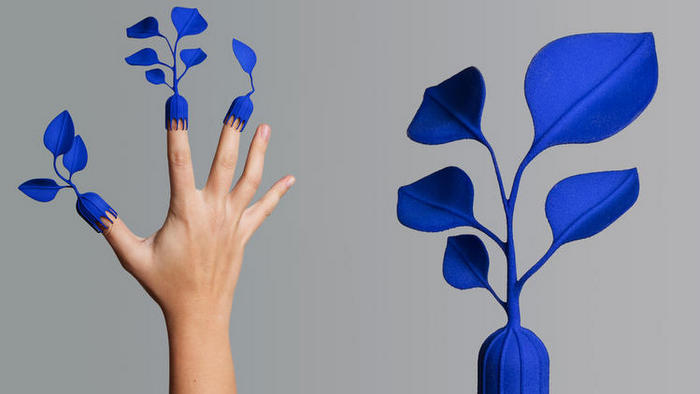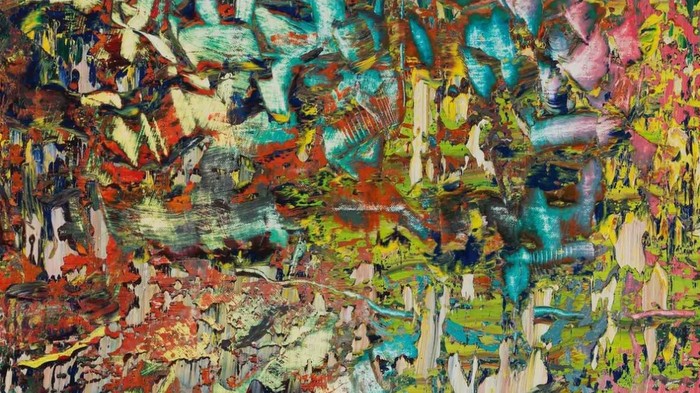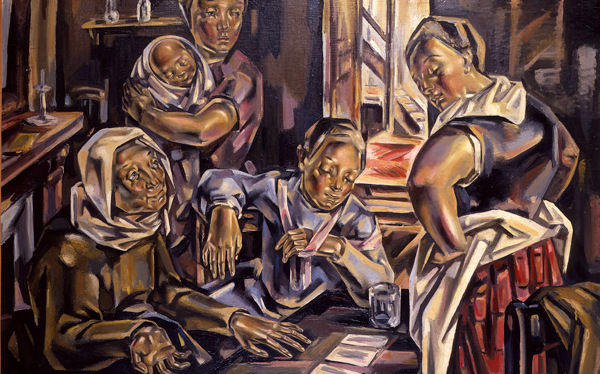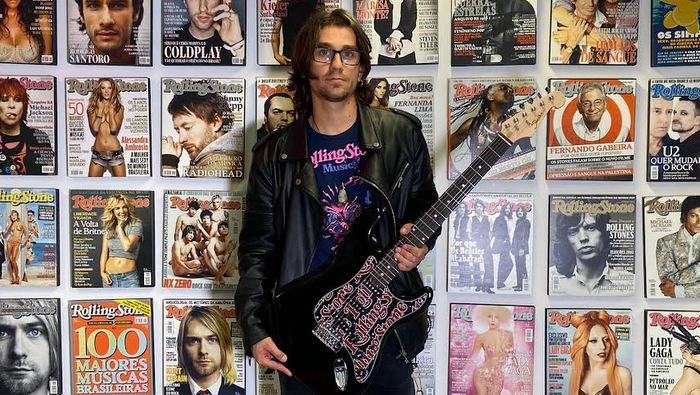David Zwirner is pleased to announce the gallery’s first exhibition of works by Gerhard Richter since the announcement of his representation in December 2022. On view at 537 West 20th Street in New York, the presentation will feature new and recent abstract works by Richter, all created between 2016 and 2023. Featuring paintings, sculpture, and works on paper, this will be the artist’s first solo exhibition in New York since his retrospective at The Metropolitan Museum of Art, which was only briefly on view in March 2020.
Celebrated worldwide as one of the most important artists of his generation, with a career spanning from the 1960s to the present, Richter has pursued a diverse and influential practice characterized by a decades-long commitment to painting and its formal and conceptual possibilities. The artist has consistently probed the relationship between painting and photography, engaging a variety of styles and innovative techniques in a complex repositioning of genres. In Richter’s work, dual modes of representation and abstraction fundamentally question the way in which we relate to images.
The exhibition will bring together a significant group of Richter’s last oil paintings, made in 2016–2017, a number of which will be shown in New York for the first time. Richter stopped making oil paintings in 2017, and the final work on canvas he made will be on view in the exhibition. Part of the artist’s Abstrakte Bilder (Abstract Paintings) series—a cornerstone of his practice since the 1970s—the works on view exemplify Richter’s investigations into chance occurrences and the painted medium’s historical and material properties. With their highly worked and intricately stratified surfaces, the last paintings foreground the sheer physical presence of paint and color, enacting a mode of composition that is aleatory yet deliberately planned.
Centrally featured will be 3 Scheiben (3 Panes) (2023), a new glass sculpture that continues Richter’s exploration of human perception and the built environment. Comprising three sequential rectangular panes of transparent yet reflective glass—each one positioned upright and measuring almost ten feet in height—the installation invites viewers to look at, through, and beyond its surface, revealing the inherently subjective and situational nature of perceived reality. Richter has consistently created glass and mirrored works since 1967, often presenting them alongside his paintings and drawings and placing them in the larger context of their surrounding architecture. Crucially, while sculptural, these free-standing glass works are also positioned as a literal reflection on painting and image-making; they respond to the art-historical notion of the painting as both a mirror and a window, while also acting as a powerful corollary to the blurred effect of Richter’s photo paintings, which the artist began experimenting with in the 1960s. As critic Hal Foster notes, “The felt analogy between a composed painting and a contemplative viewer is so fundamental that we are not aware of it until it is interfered with. And this is precisely what the glass pieces do: our reflection, in the sense of our mirrored image, disrupts our reflection, in the sense of our contemplation.”1
An expansive suite of new works on paper from 2021–2022—some made with ink and others with graphite and colored pencil—will also be on view. Richter’s drawings constitute a significant element of his practice, allowing him to explore another aspect of the role of the artist’s hand in the creation of a dynamic and abstract pictorial narrative. Many of these works feature passages of cloudy graphite rubbings juxtaposed with equally hazy semi-erased portions. The artist embeds a sparse network of crisscrossing arcs and lines amongst this backdrop, forming an enigmatic topography that seems to map out the very possibilities of image-making itself. Other drawings on view are composed of abstract monochrome washes of ink and graphite, taking on a decisively painterly appearance; as Richter describes, these works on paper chart out a parallel but complementary path to his painted oeuvre, much like that of “a poem and a novel by the same author.”2
Also on view will be mood, a group of inkjet prints that relate to a recent series of colored ink drawings by Richter, both of which debuted at the Fondation Beyeler in Basel in 2022. Part of the artist’s extensive career-long experiments with the iterative translation and interplay of mediums, these vibrant prints are almost indistinguishable from their ink counterparts, revealing Richter’s continued fascination with the possibilities of image reproduction.
On the occasion of his exhibition at David Zwirner, Richter will publish a new, limited-run artist’s book titled 100 Abstract Pictures. This presentation will additionally be accompanied by a fully illustrated catalogue forthcoming from David Zwirner Books with a newly commissioned essay by Dieter Schwarz. One of the foremost experts on Richter’s work, Schwarz is an art historian, writer, curator, and former director of the Kunstmuseum Winterthur, Switzerland.
Concurrently on view at the Neue Nationalgalerie in Berlin will be Gerhard Richter: 100 Works for Berlin. Opening in April 2023, this special long-term presentation will feature works that the Gerhard Richter Foundation gave to the museum on permanent loan in 2021, including Richter’s Birkenau (2014) cycle of large-scale abstract paintings.
Gerhard Richter (b. 1932) was born in Dresden, Germany. He studied art at the Dresden Hochschule für Bildende Künste from 1951 to 1956, with mural painting as his concentration. In 1959, he visited documenta II, held in Kassel, Germany, an experience that inspired him to alter his artistic trajectory. After his escape from East Germany in 1961, he completed a second course of study at the Staatliche Kunstakademie in Düsseldorf. There, he united with his fellow students Sigmar Polke, Konrad Lueg, and Manfred Kuttner to collectively form the short-lived “Capitalist Realism” group.
From 1964 onward, Richter had many solo exhibitions in renowned commercial galleries in Europe, among them the Galerie Schmela in Düsseldorf (1964); Galerie Friedrich & Dahlem, Munich (1964, 1966); City-Galerie Bruno Bischofberger, Zurich (1966); Galleria La Tartaruga, Rome (1966); Wide White Space, Antwerp (1967); Galerie Heiner Friedrich, Munich (1967); Galerie Rudolf Zwirner, Cologne (1968); and Galleria del Naviglio, Milan (1969).
Richter’s first solo exhibition in a public institution was held at the Gegenverkehr, Zentrum für aktuelle Kunst, in Aachen, Germany, in 1969. In 1972 he was selected as the only artist to represent Germany in its National Pavilion at the Venice Biennale. His work has been presented in numerous solo shows and retrospective exhibitions at important international institutions, including Kunstverein für die Rheinlande und Westfalen, Düsseldorf (1971, 1986); Kunsthalle Bremen, Germany (1975); Musée national d’art moderne, Centre Georges Pompidou, Paris (1977, 2012); Städtische Kunsthalle, Düsseldorf (1986); Neue Nationalgalerie, Staatliche Museen Preußischer Kulturbesitz, Berlin (1986, 2012); Hirshhorn Museum and Sculpture Garden, Smithsonian Institution, Washington, DC (1988, 2003); San Francisco Museum of Modern Art (1989, 2002); Tate, London (1991, 2011); Moderna Museet, Stockholm (1993); The Art Institute of Chicago (2002); The Museum of Modern Art, New York (2002); Queensland Art Gallery, Brisbane (2017); The Met Breuer, New York (2020); and The National Museum of Modern Art, Tokyo (2022). Richter has exhibited at documenta, in Kassel, Germany, more times than any other artist (1972, 1977, 1982, 1987, 1992, 1997, 2007, and 2017).
Richter has been honored with a number of significant awards, among them the Kunstpreis Junger Westen, Recklinghausen, Germany (1967); Arnold-Bode-Preis, Kassel, Germany (1981); Oskar-Kokoschka-Preis, Vienna (1985); Goslarer Kaiserring, Goslar, Germany (1988); Golden Lion at the 47th Venice Biennale (1997); Praemium Imperiale Award, Tokyo (1997); Wexner Prize, Wexner Center for the Arts, Columbus, Ohio (1998); Foreign Honorary Membership of the American Academy of Arts and Letters, New York (1998); Staatspreis des Landes Nordrhein-Westfalen, Düsseldorf (2000); and Kunst- und Kulturpreis der deutschen Katholiken, Bonn, Germany (2004). In 2007 Richter received honorary citizenship in Cologne, Germany, and in the same year, he designed a spectacular glass window for the Cologne Cathedral.
David Zwirner organized an exhibition of Richter’s prints and multiples in New York in 1994, in the gallery’s first twelve months of programming. The artist’s work was also the subject of exhibitions at the gallery in 2000 (Gerhard Richter: Early Paintings) and in 2004 (Gerhard Richter: Landscapes).
Work by Richter is held in important public and private collections worldwide. He lives and works in Cologne.
1 Hal Foster, “In a Glass, Darkly,” in Gerhard Richter: Painting After All. Exh. cat. (New York: The Metropolitan Museum of Art, 2020), p. 96.
2 Gerhard Richter, as quoted in Dieter Schwarz, “Gerhard Richter: Drawings 1963–2020,” in Gerhard Richter: Drawings 1963–2020. Exh. cat. (Düsseldorf: Sies + Höke, 2022), p. 16.
Dates: March 16—April 22, 2023
Image: Gerhard Richter, Abstraktes Bild (Abstract Painting), 2016
Source: David Zwirner.com
Related Publications

CID Grand Hornu: Super Power Design
April 25, 2024













